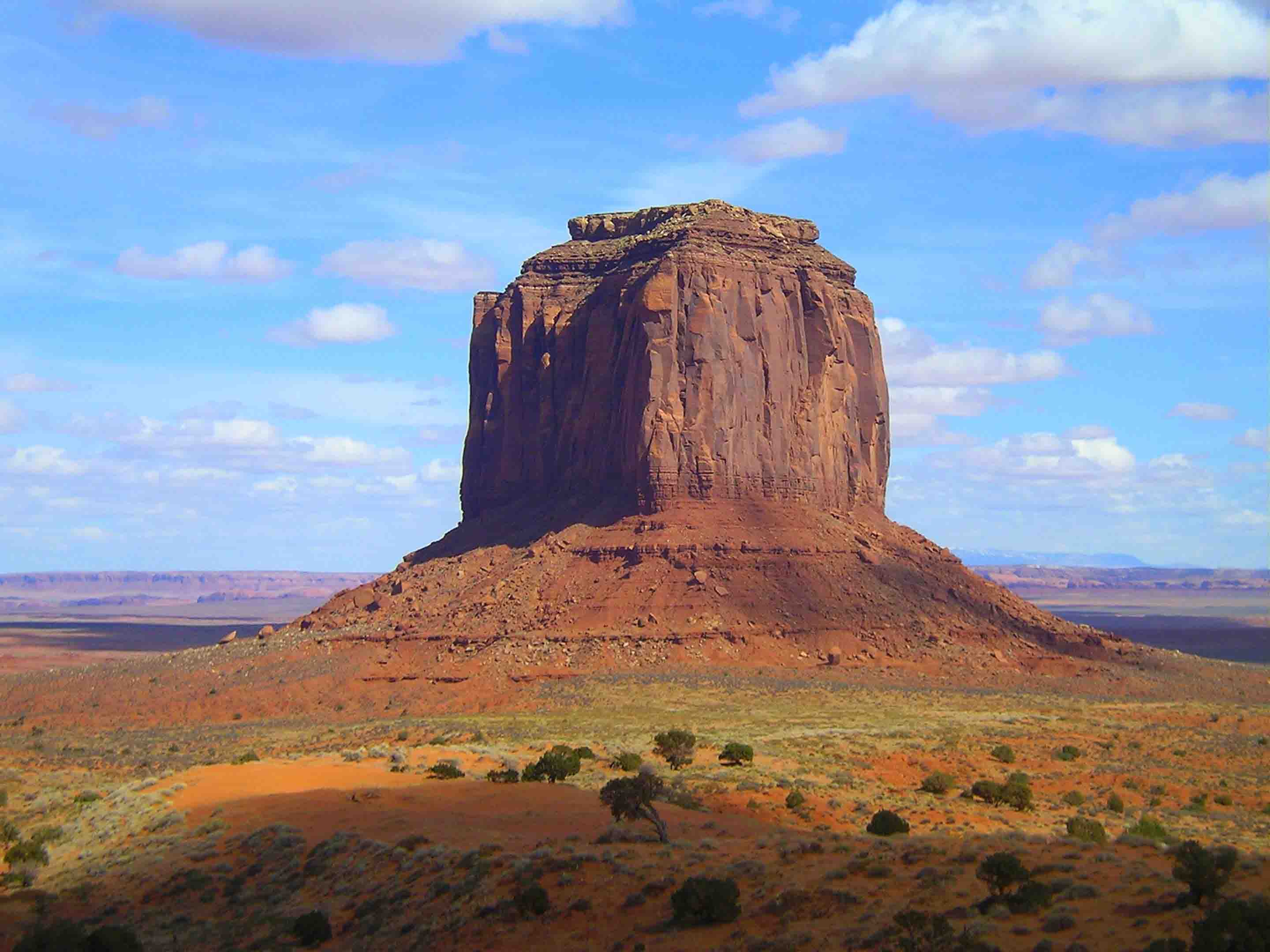Weathering is the general name given to natural processes that break down rock at the Earth’s surface. Weathering can be categorized into two main types, mechanical weathering and chemical weathering.
Mechanical weathering refers to the physical breakdown of rock into smaller and smaller pieces. Mechanical weathering only involves changes in the shape and size of the rock; the chemical composition of the rock remains unchanged. Mechanical weathering can include a number of processes.
- Frost Wedging: Water expands as it freezes. Water that has seeped into cracks in rocks will exert pressure on the rock when the temperature drops and the water changes into ice. When the ice thaws, more water enters the cracks. Repeated freezing and thawing of this water will eventually result in the rock breaking apart. This process is known as frost wedging. This freeze-thaw cycle of frost wedging is the same process that often damages highways in northern climates.
- Biological Activity: Plants and animals can act as agents of mechanical weathering. Plant roots can grow into cracks, gradually enlarging them over time. Tree roots, for example, can cause concrete sidewalks to buckle. In addition, the burrowing and digging activities of animals like squirrels can also contribute to mechanical weathering.
- Abrasion: Abrasion is the physical process that results when rocks physically collide with one another. This scraping of rocks against one another results in the breaking and wearing away of rock.
- Unloading: Unloading refers to the release of pressure on rocks that were originally formed deep within the Earth under intense pressure and temperature. The upper layer of rock begins to expand as pressure on the rock is released at the Earth’s surface. This results in horizontal fracturing in the rock.
Monument Valley - An Abrasive Masterpiece
Monument Valley, in Arizona and Utah, is familiar to many people because of its use in countless westerns.
- Click here to see where Monument Valley is located.
Less well known is that Monument Valley is a classic example of a landscape primarily formed as a result of mechanical weathering. Wind abrasion has been, and continues to be, a major factor in the formation of the thin pillars and flat-topped rock formations of Monument Valley.
- Click here to to zoom in on Eagle Mesa, a typical Monument Valley formation.
- Explore the unusual formations of Monument Valley by rotating your view, changing location and zooming in on striking features. Use the graphic to the right as a guide to help you locate formations.






